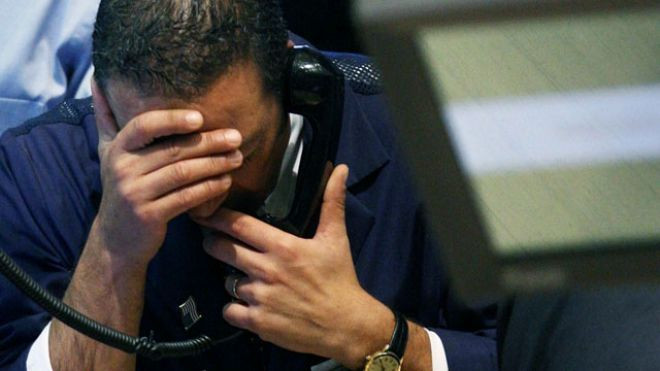Market Technical View: Small Top Developing, Caution Warranted

The S&P 500 stock index, as well as other major indices, is tracing out a small head-and-shoulders (H&S) top, in our view, and with the other concerns we have highlighted recently, it may be time to take some coin out of the market. While we think the “500” is only working on a small top, our fear is that it may turn into something larger.
With the failed breakout above 1,700, it appears that the bears are wrestling control away from the bulls. We think the “500” has traced out a left shoulder as well as a head and may be working on the right shoulder of the H&S pattern. The low of the left shoulder is down at 1,676, so the right shoulder may go down to that level, bounce, and then complete the formation with a break of the neckline and chart support at 1,676.
Based on the size of the H&S, we could then see a measured move down to the 1,642 level. Initial chart support below 1,676 comes in near 1,650, with the 50-day simple moving average also in this area. A 38.2 percent retracement of the rally from June until early August sits near 1,650, while a 50 percent giveback targets 1,635.
One of our main concerns from an intermediate-term standpoint is the condition of weekly price momentum. This is one of our favorite indicators for the intermediate- to long-term and it is flashing caution. In addition, it is suggesting that the market is susceptible to more than just a run-of-the-mill pullback, and something more in the size of 8 percent to 15 percent to the downside.
From a weekly momentum standpoint, we now have in place a major bearish divergence with the latest run to all-time highs in the “500” not being confirmed by the 14-week Relative Strength Index (RSI) or the weekly Moving Average Convergence-Divergence (MACD) indicator. The MACD has put in a lower high, but has yet to cross back below its signal line. In addition, there is a bearish divergence on the 43-week RSI as well. We note that there can be a series of weekly momentum divergences before the market actually tops, but it is something to be worried about, in our view.
With the strong rally off the June low, sentiment has moved back to very optimistic levels on some indicators, a definite worry, in our opinion. The 30-day exponential moving average of the Chicago Board Options Exchange (CBOE) equity-only put/call (p/c) ratio has fallen back into the danger zone, with a close Thursday at 0.61. This is not far from the low in May just under the 0.60 level, and certainly a warning, in our view. The National Association of Active Investment Managers (NAAIM) Survey of Manager Sentiment jumped 26 percentage points last week to a reading of 86 percent, as those managers looking for a market decline capitulated to the upside.
According to Jason Goepfert, at www.sentimentrader.com, total assets in the Rydex Leveraged Funds for the S&P 500 and the NASDAQ-100 index (5-day average) have jumped above $500 million for the second time this year. The Rydex bull/bear ratio shows six times more assets in the bull funds than the inverse funds, near its highest levels of all time. Since early 2010, there has been a defined range in those assets, between $250 million on the low end (when investors were pessimistic) and $500 million on the high end (when they were optimistic). We think this is another warning that sentiment has moved too far to the bullish side.
From an internal standpoint, the NYSE advance/decline (A/D) line has failed to make a new all-time high so it is lagging the S&P 500 as well as the NYSE Composite. During many breakouts to new recovery highs over the past couple of years, the A/D led the “500” to new highs, so we have a bit of a weakening from an internal perspective. There is a fairly glaring negative divergence between price and the percentage of stocks hitting 52-week highs.
Back in mid-May, almost 17 percent of issues traded on the NYSE hit 52-week highs, while only 13 percent hit new highs yesterday. Like the weekly momentum divergence, you can see many negative divergences before the overall market finally peaks.
Gold prices pulled right back to chart support after running into stiff chart resistance in the $1,340/$1,350 per ounce zone. Prices appear to be working on some type of bullish reversal formation, possibly an inverse H&S pattern. We think gold is set up to break above resistance in the mid-$1,300/oz. region taking prices over 1,450/oz.
The Commitment of Traders (COT) data remain extremely favorable toward gold, while market sentiment remains very bearish toward the yellow metal, a bullish sign as well, in our view. We think it’s possible in the months ahead to see gold rally while stocks take a breather.
On the weekly chart, it looks like Treasury yields are topping out, at least for the short term. The 10-year yield appears to be tracing out a small double-top that measures about 27 basis points. A break below 2.45 percent will complete the double top and open up the door for a measured move back down toward 2.2 percent or a zone of chart resistance. Daily momentum has rolled over while weekly momentum has flattened out, and we think these are more signs of at least a short-term top in yields. The COT data support a rally in Treasurys while sentiment has plummeted to bearish levels, and is another reason we could see a counter-trend rally in bonds.
In addition, we could see money rotate back toward the safety of Treasurys if we see some decent weakness in the equity market.
Mark D. Arbeter, CMT, is Chief Technical Strategist at S&P Capital IQ in New York.
© Copyright IBTimes 2024. All rights reserved.











